Gas Giant Eclipse
Gas Giant Eclipse

Picture of the Day - October 13, 2018
The sky of a large moon orbiting a gas giant right before an eclipse.
More Posts from Sharkspaceengine and Others

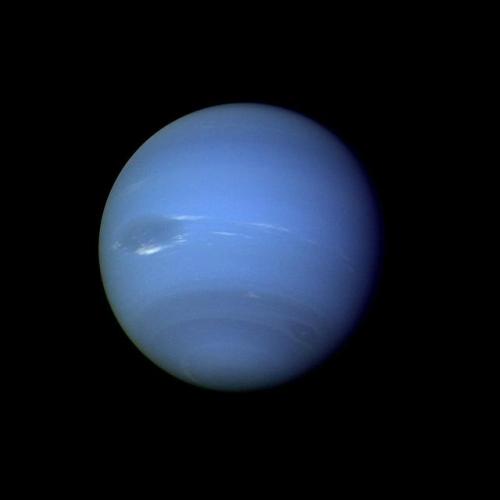
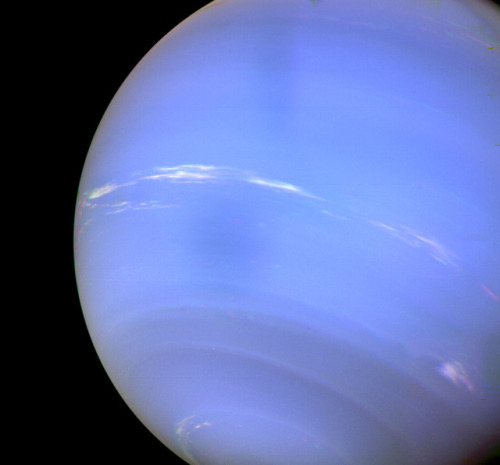
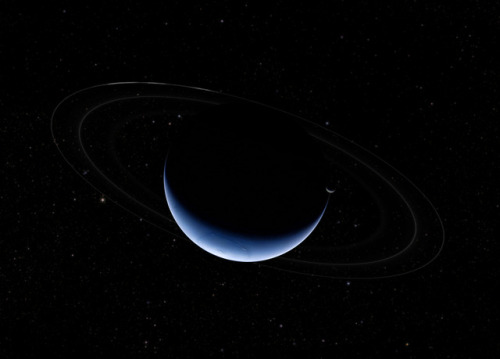
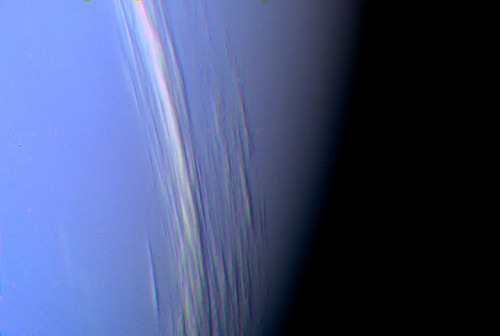
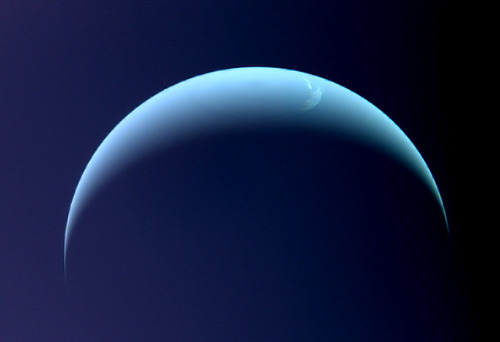
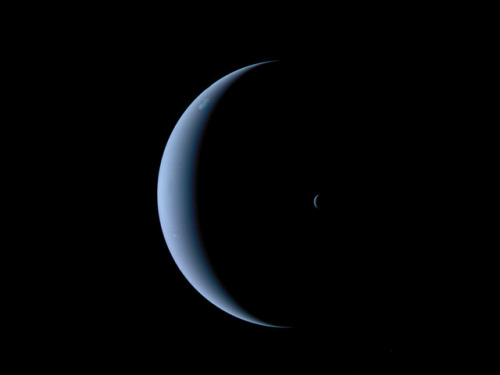
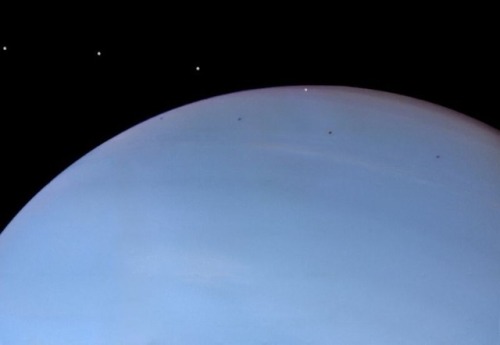
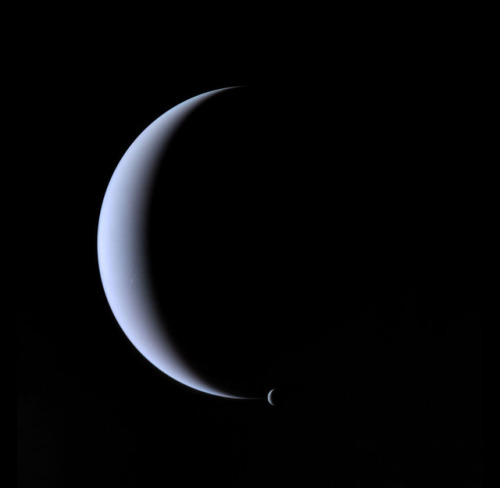
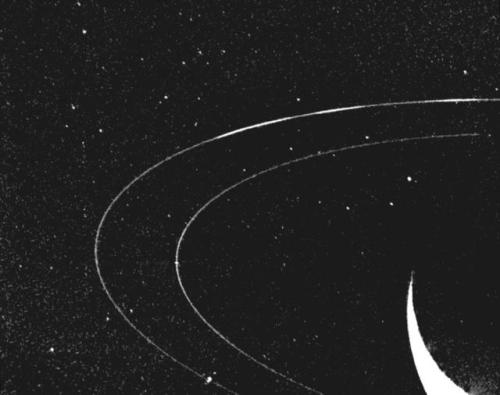
Neptune ♆
On this day in 1846 was discovered the planet Neptune.
The ice giant Neptune was the first planet located through mathematical predictions rather than through regular observations of the sky. (Galileo had recorded it as a fixed star during observations with his small telescope in 1612 and 1613.) When Uranus didn’t travel exactly as astronomers expected it to, a French mathematician, Urbain Joseph Le Verrier, proposed the position and mass of another as yet unknown planet that could cause the observed changes to Uranus’ orbit. After being ignored by French astronomers, Le Verrier sent his predictions to Johann Gottfried Galle at the Berlin Observatory, who found Neptune on his first night of searching in 1846. Seventeen days later, its largest moon, Triton, was also discovered.
Neptune is invisible to the naked eye because of its extreme distance from Earth. Interestingly, the highly eccentric orbit of the dwarf planet Pluto brings Pluto inside Neptune’s orbit for a 20-year period out of every 248 Earth years. Pluto can never crash into Neptune, though, because for every three laps Neptune takes around the Sun, Pluto makes two. This repeating pattern prevents close approaches of the two bodies.
Nearly 4.5 billion kilometers (2.8 billion miles) from the Sun, Neptune orbits the Sun once every 165 years.
Uranus’ blue-green color is also the result of atmospheric methane, but Neptune is a more vivid, brighter blue, so there must be an unknown component that causes the more intense color.
Despite its great distance and low energy input from the Sun, Neptune’s winds can be three times stronger than Jupiter’s and nine times stronger than Earth’s.
Winds on Neptune travel faster than the speed of sound.
In 1989, Voyager 2 tracked a large, oval-shaped, dark storm in Neptune’s southern hemisphere. This “Great Dark Spot” was large enough to contain the entire Earth.
Neptune has five known rings. Voyager 2’s observations confirmed that these unusual rings are not uniform but have four thick regions (clumps of dust) called arcs. The rings are thought to be relatively young and short-lived.
Neptune has 14 known moons, six of which were discovered by Voyager 2.
Triton, Neptune’s largest moon, orbits the planet in the opposite direction compared with the rest of the moons, suggesting that it may have been captured by Neptune in the distant past.
To know more about the planet Neptune click here and here.
Images credit: NASA/JPL- Caltech (some images processed by Kevin M. Gill)

Picture of the Day - January 13, 2019
Aurora’s dance over the northern pole and a hazy world.

Picture of the day - November 29, 2018
Its been a while since I showcased an entire star system on here, so the next several sets of pictures will be all the planets in this one system that I am going to name the “Insight System” after the newest Mars lander. Many more picture to come.
Above is a preview pic of the system. This is a binary system, so the planet’s night sides are all faintly illuminated.
Twin Sunset

Picture of the Day 2 - October 22,2018
Two sun’s setting viewed from planetary orbit.





Triangulum Log - Blue Veil System (Post 1) - Introduction
I’ve gone deeper into the Triangulum Galaxy, traveling almost 20,000 light years around the perimeter of the galaxy and coming across this binary orange dwarf system that has 10 planets. The system is next to a blue/teal colored nebula, and lies within an outer arm of the Triangulum galaxy. You may notice there are more stars in the sky compared to the last 2 systems.
High Resolution Pics
Image 1 - Tranquility
Image 2 - Twin Suns
Image 3 - Lunar Sunrise
Image 4 - Calm Giant
Not space related, but wanted to see what my space engine followers thought of this question. Hoping to get some good memes out of it.
Shark Question
Are male sharks now going to be banned if their claspers are visible? Also are female sharks with scars on their face going to be banned since that can be considered sexual abuse by a male shark?

Picture of the day 2 - November 14, 2018
An earth-like moon orbiting a gas giant. This moon has purple-colored vegetation and extremely large ice caps.
Space Engine System ID: RSC 8475-0-4-2269-22 A4

Front row seat to a galactic merger.
-
 brushesnbunnies liked this · 6 years ago
brushesnbunnies liked this · 6 years ago -
 sharkspaceengine reblogged this · 6 years ago
sharkspaceengine reblogged this · 6 years ago
My Space Engine Adventures, also any space related topic or news. www.spaceengine.org to download space engine. The game is free by the way. Please feel free to ask me anything, provide suggestions on systems to visit or post any space related topic.Check out my other blog https://bunsandsharks.tumblr.com for rabbit and shark blog.
294 posts

